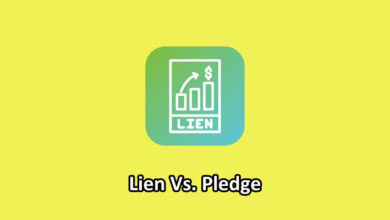Economic growth and economic development are pivotal concepts in the world of economics, influencing the prosperity and well-being of nations and individuals alike. In this blog, we will delve into these critical concepts and shed light on the key differences between them.
Before we dive into the definitions and differences, it’s essential to recognize why these two ideas matter. Economic growth and development are at the heart of a nation’s progress, affecting employment rates, living standards, and overall quality of life.
Understanding these concepts enables policymakers, businesses, and citizens to make informed decisions about resource allocation and priorities.
Economic Growth Vs. Economic Development (Comparison)
| Economic Growth | Economic Development |
|---|---|
| Economic growth refers to the increase in a country’s production of goods and services over time. | Economic development is a broader concept that encompasses improvements in living standards, poverty reduction, and overall well-being. |
| It is quantitative in nature and primarily focuses on increasing the size of the economy. | It is qualitative in nature and focuses on improving the well-being of the population. |
| Economic Growth primarily centered on boosting income levels. | Economic development goes beyond income to encompass factors like healthcare, education, and access to basic amenities. |
| Economic growth tends to be more short-term and cyclical, influenced by factors like business cycles. | Economic development is a long-term and sustainable process that seeks to make lasting improvements in living standards. |
| Economic growth is primarily measured through metrics like GDP, which quantify the total value of goods and services produced within a country’s borders | Economic development employs a broader range of indicators, including the Human Development Index (HDI), which considers factors like life expectancy, education, and income. |
| Policies aimed at promoting economic growth often prioritize GDP expansion and may not necessarily lead to improvements in overall well-being. | Economic development requires a more balanced and targeted approach by policymakers. It involves investments in education, healthcare, social safety nets, and income redistribution. |
| It is applicable to a wide range of economies, including both developed and developing nations. | It primarily applies to developing countries, where its goal is to assess and measure progress in improving living standards. |
| Governments often support economic growth through policies that encourage investment, innovation, and infrastructure development. | Economic development requires a more comprehensive and targeted approach from governments. |
Defining Economic Growth
Economic growth, at its core, refers to the increase in the production and consumption of goods and services within a country’s economy over time. It signifies a rise in a nation’s overall economic output.
How Economic Growth is Measured
To gauge economic growth, economists often turn to Gross Domestic Product (GDP), a metric that quantifies the total value of all goods and services produced within a country’s borders. An expanding GDP is typically seen as a sign of economic growth, indicating that the economy is producing more and people are spending more.
Defining Economic Development
While economic growth focuses on quantitative aspects, economic development takes a more comprehensive approach. It encompasses improvements in living standards, reductions in poverty, and enhancements in overall well-being. Economic development is not solely about increasing production; it’s about improving people’s lives.
Indicators of Economic Development
Economists and policymakers rely on various indicators to measure economic development, with the Human Development Index (HDI) being a prominent one. The HDI considers factors such as life expectancy, education, and income to provide a more holistic view of a nation’s development.
Key Differences Between Economic Growth and Economic Development
Now that we’ve defined both economic growth and development let’s explore five crucial distinctions between these two concepts.
- Short-term vs. Long-term: Economic growth can be relatively short-term and cyclical, driven by factors like business cycles. Economic development, on the other hand, is a long-term, sustainable process.
- Measurements: Growth is measured primarily through GDP, while development incorporates a broader range of indicators, including the HDI.
- Policy Priorities: Policies aimed at promoting growth may not necessarily lead to development. Policymakers must strike a balance between these goals to ensure comprehensive progress.
- Government Support: Governments often support economic growth through policies that encourage investment, innovation, and infrastructure development. On the other hand, economic development requires a more comprehensive and targeted approach from governments.
Factors Influencing Economic Growth
Economic growth doesn’t occur in a vacuum; it’s driven by a combination of factors that stimulate production and consumption within an economy. Some of them are discussed as follows.
Investment
One of the key drivers of economic growth is investment, both domestic and foreign. Investment in infrastructure, technology, and industries contributes to increased production capacity, job creation, and overall economic expansion. Countries that prioritize investment often experience more robust growth rates.
Technological Advancements
In the modern age, technology plays a pivotal role in economic growth. Innovations, research and development, and the adoption of new technologies can lead to increased productivity and efficiency. Think about the digital revolution and how it has transformed industries, creating new opportunities for economic growth.
Infrastructure Development
A well-developed infrastructure, including transportation networks, communication systems, and energy supply, can significantly boost economic growth. Efficient infrastructure reduces production costs, facilitates trade, and attracts investment.
Real-World Examples
Countries like China and India serve as compelling real-world examples of nations experiencing rapid economic growth. These nations have attracted substantial foreign investment, harnessed technology for development, and invested heavily in infrastructure, leading to impressive GDP growth rates.
Factors Influencing Economic Development
Economic development extends beyond the confines of GDP growth, focusing on human well-being and social progress. The major factors are explained as follows:
Education
Education is a cornerstone of economic development. A well-educated population can access higher-skilled jobs, fostering innovation and contributing to higher income levels. Investment in education equips people with the tools to escape poverty and contribute to economic development.
Healthcare
Access to quality healthcare is another critical factor in economic development. Healthy individuals are more productive and can participate actively in the workforce. Moreover, improved healthcare reduces mortality rates and contributes to a higher quality of life.
Social Equality
Social equality and inclusive development are vital components of economic development. Reducing income inequality and ensuring that marginalized populations have equal access to opportunities can lead to more sustainable and equitable growth.
Case Studies in Economic Development
Scandinavian countries like Norway and Sweden are exemplars of nations that have prioritized economic development beyond GDP growth. These countries have invested heavily in education, healthcare, and social welfare programs, resulting in high levels of human development and overall well-being.
The Relationship Between Growth and Development
Economic growth and development are intricately connected, yet they are not one and the same. While growth can facilitate development, it is not a guarantee, and focusing solely on growth can have adverse consequences.
Growth as a Facilitator
Economic growth can create resources and revenue that governments can then allocate to areas like education and healthcare, promoting development. A larger economic pie can benefit everyone if distributed equitably.
The Pitfalls of Growth-Centric Policies
However, an exclusive focus on growth can lead to negative outcomes. For instance, rapid industrialization without proper environmental regulations can harm the environment, negatively impacting the well-being of the population in the long run. Additionally, excessive income inequality can undermine social cohesion and hinder development.
In the next section, we will delve deeper into the challenges and potential pitfalls of prioritizing economic growth at the expense of development, including issues like income inequality and environmental degradation. It’s crucial to strike a balance between these two objectives for sustainable progress.
Stay tuned as we explore the potential downsides of a growth-centric approach and its implications for policy and decision-makers.
Challenges and Pitfalls in Pursuing Economic Growth over Development
While economic growth is undeniably important, exclusive focus on this aspect can bring about a host of challenges and pitfalls, which must be considered by policymakers.
1. Income Inequality
One of the most significant concerns associated with growth-centric policies is income inequality. When a nation experiences economic growth without mechanisms in place to distribute the benefits equitably, the gap between the rich and the poor can widen dramatically. This inequality can lead to social unrest, hinder social mobility, and ultimately impede overall development.
2. Environmental Degradation
Unbridled economic growth often comes at the expense of the environment. Excessive industrialization, deforestation, and pollution can degrade ecosystems and harm public health. Environmental degradation not only affects the quality of life but also poses long-term economic risks as resources become scarcer and environmental crises escalate.
3. Social Unrest
High levels of income inequality and environmental degradation can fuel social unrest. Protests, strikes, and conflicts may erupt when a significant portion of the population feels excluded from the benefits of growth or when environmental issues reach a crisis point. Social unrest can disrupt economic stability and impede development efforts.
Policy Implications and Conclusion
To navigate the complex relationship between economic growth and development, policymakers must adopt a balanced approach that takes into account both short-term economic gains and long-term societal well-being.
Inclusive Growth Policies
Policymakers can mitigate income inequality by implementing policies that promote inclusive growth. These policies may include progressive taxation, social safety nets, and investments in education and job training to ensure that the benefits of growth reach all segments of the population.
Sustainable Development
Prioritizing environmental sustainability is crucial for the long-term health of both economies and societies. Policymakers can encourage sustainable practices, promote renewable energy, and enact regulations that safeguard natural resources.
Empowering Marginalized Communities
To address social inequality and reduce the risk of social unrest, policies should aim at empowering marginalized communities. Access to education, healthcare, and economic opportunities should be extended to all, regardless of socioeconomic status.
Final Verdict
In conclusion, understanding the nuanced relationship and difference between economic growth and economic development is vital for informed decision-making. While growth can fuel development, it must not come at the cost of social equity and environmental sustainability. Policymakers and leaders must strive for a balanced approach that fosters inclusive growth and ensures the well-being of their populations for generations to come.
As we wrap up this exploration, we encourage readers to consider the implications of these concepts in their own lives and communities. By prioritizing both growth and development, we can build a more prosperous and sustainable future for all.
FAQs about Economic Growth vs. Economic Development
What is the Main Difference Between Economic Growth and Economic Development?
Economic growth primarily focuses on the increase in the production and consumption of goods and services, often measured by metrics like GDP. Economic development encompasses a broader scope, including improvements in living standards, reductions in poverty, and overall well-being.
Why is Understanding Economic Growth and Economic Development Important?
Understanding these concepts is crucial because they impact a nation’s prosperity and quality of life. It informs policymakers, businesses, and individuals about resource allocation and priorities for sustainable progress.
How is Economic Growth Measured?
Economic growth is typically measured using Gross Domestic Product (GDP), which quantifies the total value of all goods and services produced within a country’s borders over time.
What are Some Factors Influencing Economic Growth?
Factors influencing economic growth include investment, technological advancements, and infrastructure development. These elements stimulate production, create jobs, and contribute to economic expansion.
Can You Give an Example of a Country that Prioritizes Economic Development Over Growth?
Scandinavian countries like Norway and Sweden are known for prioritizing economic development over GDP growth. They have invested heavily in education, healthcare, and social welfare programs, resulting in high levels of human development and overall well-being.




3 Comments